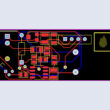We’ve all been there. With multiple people working on one project, merge conflicts are inevitable. They are practically a rite of passage for hardware designers, but are a major annoyance nonetheless. These occur when people make conflicting changes to a line of code in the design. When this happens, Git cannot determine which version to go with. In such cases, it’s up to the engineers to see if they want to overwrite a file, or keep the different changes in different branches. This can be confusing and cause trouble for the product design down the line, so avoid merge conflicts as much as possible.
The good news is that even with remote work teams, there is no shortage of tools or features to help avoid these errors. InventHub itself minimizes the chances of merge conflicts by increasing communication and transparency. In addition, it brings all the stakeholders together in one place to prevent misunderstandings and working in silo. This makes the whole process much easier on everyone and allows for a smoother workflow.
However, even with such tools and features, hardware engineers must also be quite diligent. They can avoid merge conflicts by taking a few basic precautions, and ensure that product development runs smoothly.
What can engineers do to avoid merge conflicts?
While merge conflicts are something which can’t be completely eliminated, there are a few things engineers can do to make sure they don’t occur on a regular basis. The key is communication and diligence, along with using the proper tools.
Managers and team leaders must make sure that their teams have the right set of tools with the right features enabled. This will minimize merge conflicts and a myriad of other issues as well.
Use visual diffing tools
While software design works well with regular differencing tools, hardware design is a whole other ballpark. It is a very graphical field, with its tools utilizing visual cues more than anything else. Hence, just any diffing feature will not work. Instead, a dedicated visual diffing tool is required. InventHub has just the thing for this, with users able to toggle between different layers of designs, and see all changes and additions, complete with color-coding.
These visual diffing tools give engineers an immediate view of what’s going on with a design, and enables them to ascertain where conflicts may take place. They can also easily switch and toggle between layers, giving them a thorough view of all parts of the design.
Work on different branches
We all know how branching is the central aspect of collaborative hardware design. However, when it comes to multiple users, especially when they are working remotely, efficient collaboration needs to be there.
One of the ways to do this is to work on different branches for major aspects. However, teams must do this quite carefully and not overdo it. This is because it will be too tedious to log every change in a different task and will create too many branches. Keep things organized, with just a few branches for all changes.
Have a default branch for release versions
One way to minimize extraneous branches and avoid merge conflicts is by having a single default branch for release versions of the product design. If you have too many parallel versions, there is a larger margin for error, and much more room for confusion.
Users can name the default branch whatever they want, and commit changes to it to stay on one page. This will identify merge conflicts as soon as they occur, enabling them to resolve them almost immediately. Having a product-ready branch which all users can access is really helpful when trying to collaborate in a smooth and time-effective manner.
Commit changes frequently
One of the simplest ways to avoid merge conflicts is to commit changes quite frequently. This will ensure that the latest versions of the designs are up in the file, and that other users do not make conflicting changes.
This makes for more efficient collaboration, and keeps everyone on one page. Of course, in hardware design, with its visual aspect and intricacies, the frequency will not be as immediate as it can be in software design. Teams must agree on a set of rules for when to commit changes and to what branches.
Communicate with your team members
The simplest and most effective way to prevent merge conflicts is to effectively communicate with your team members. InventHub makes this simple with its annotations feature, which allows real-time collaboration with comments on designs. Users can leave comments for other team members to see later or even communicate in real time with this feature, ensuring that any misunderstandings are tackled effectively.
In conclusion, merge conflicts are quite avoidable in hardware design. It’s only a matter of proper collaborative tooling and efficient communication methods. InventHub has the solutions the hardware industry needs for these issues, so check it out!








